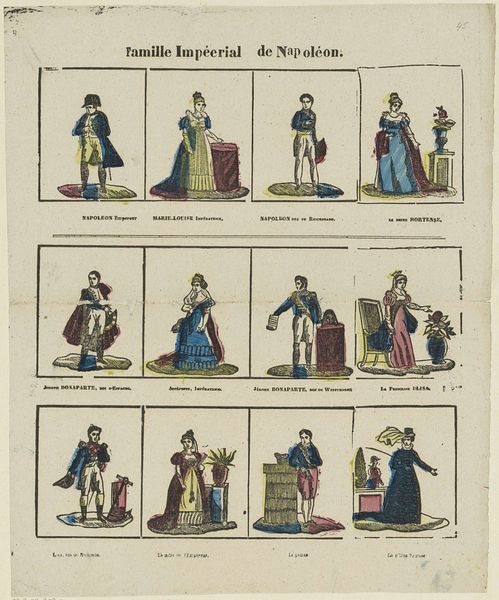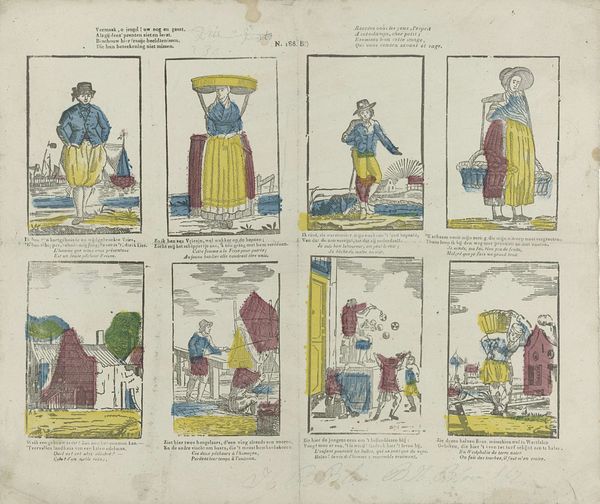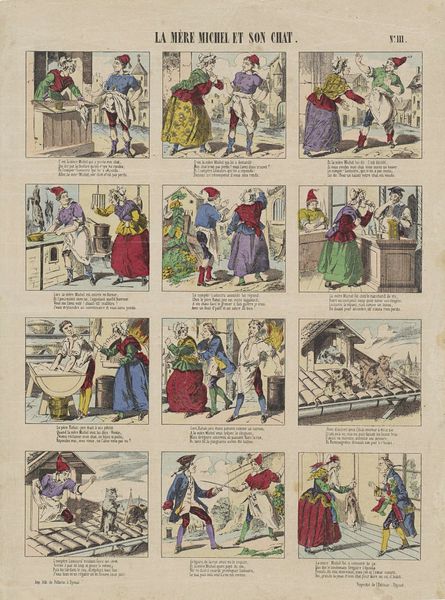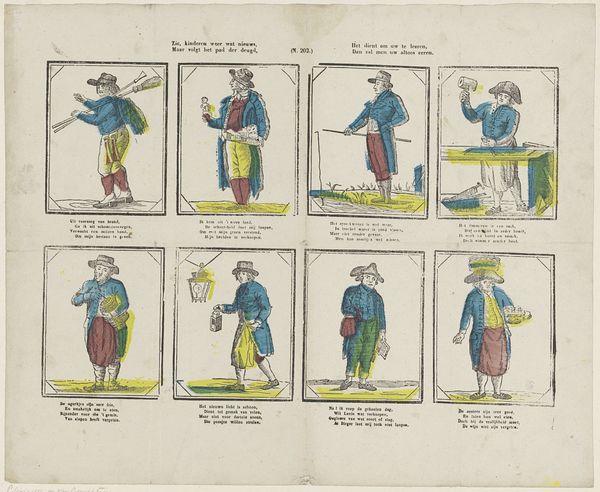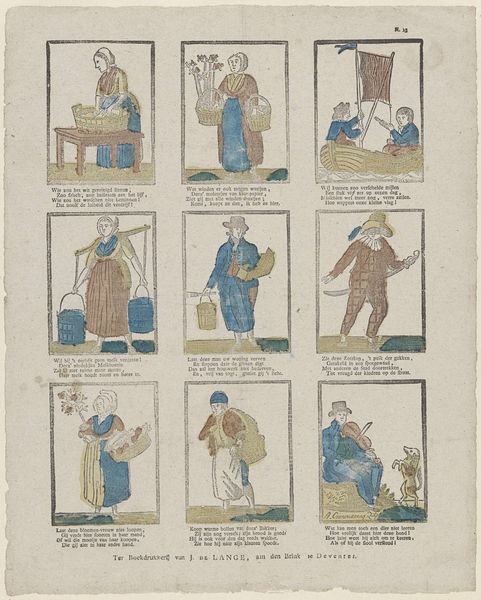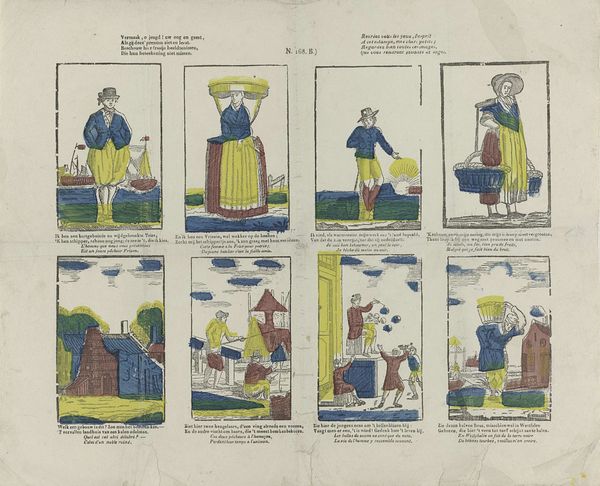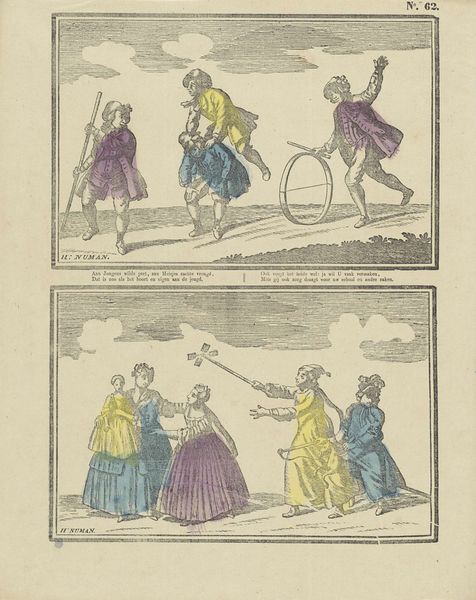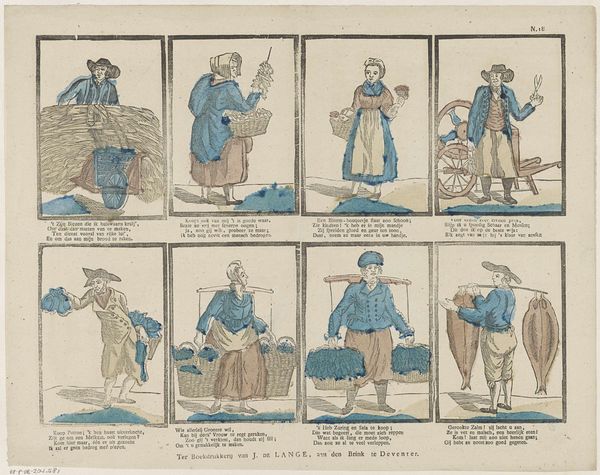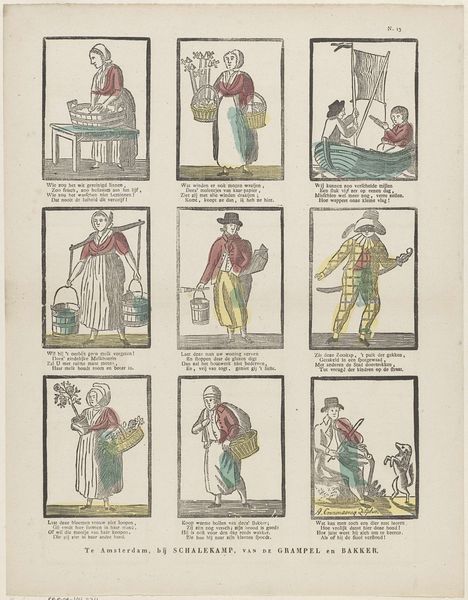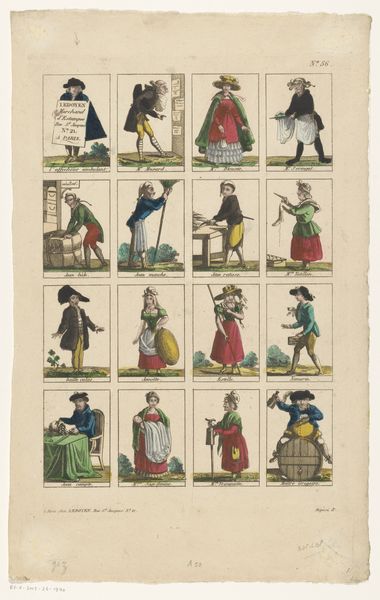
print, etching, engraving
# print
#
etching
#
historical fashion
#
romanticism
#
sketchbook drawing
#
genre-painting
#
history-painting
#
engraving
Dimensions: height 414 mm, width 326 mm
Copyright: Rijks Museum: Open Domain
Curator: Here we have an etching titled "Nederlandse klederdracht," which translates to "Dutch traditional costume." Created by Philippus Jacobus Brepols between 1800 and 1833, it's held here at the Rijksmuseum. Editor: It’s visually striking, despite being a print. The colors are vibrant, almost like folk art, and the compositions have a naive charm. The characters seem posed, like figures in a storybook. Curator: Indeed. These prints played a vital role in documenting and standardizing notions of regional identity in the Netherlands during a time of significant social and political change, after the Patriot revolution. Think of it as visual nation-building. Editor: Fascinating. I immediately read the oversized hats as symbols of community, almost sheltering. There’s something about how these garments visually articulate a sense of belonging and place, a visual language worn on the body. Curator: Absolutely. Costume was, and still is, an explicit display of allegiance, aspiration and social distinction. The level of detail is important—Brepols wanted to depict accurate reflections of attire of that specific era. The captions underline that these prints serve almost as evidence of reality. Editor: Looking closer, you see subtle distinctions. While the color palettes remain bright and the detailing intricate in each scene, the gestures and settings seem distinct and tied to trade or occasion, giving clues as to the characters' identities. There is the figure carrying what appears to be baked bread, a man next to an older woman with a large spinning wheel. Each panel represents a carefully composed portrait. Curator: And it speaks volumes about how genre painting was crucial for formulating what ‘Dutch’ identity even meant to people in the late 18th and early 19th centuries. These are romanticized depictions for wider consumption and distribution, intended to codify national ideals. Editor: So much cultural information is embedded in these visual forms. Even now, tracing these historic garments connects us to cultural memory. I find that extremely powerful. Curator: It offers a potent reminder that what we wear isn't simply about aesthetics; it communicates complex social, historical, and political narratives. Editor: Precisely, clothing operates as both armor and flag—simultaneously protecting the individual while proclaiming group affiliation. That resonates across centuries, doesn't it?
Comments
No comments
Be the first to comment and join the conversation on the ultimate creative platform.
